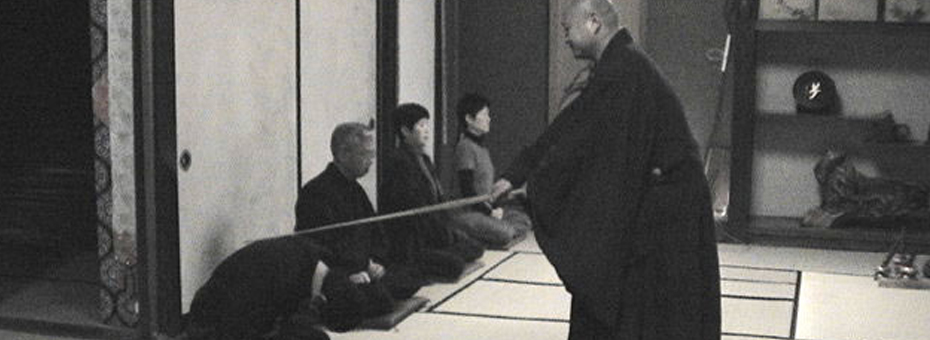Years ago I was coaching a multi-national team of American and French engineers designing a non-traditional factory in France. When I arrived for the first week of design work, I reviewed their initial production line blueprint, which was, predictably, a straight-line with short-cycle time jobs. That first week I oriented them to the idea of a U-shaped work cell run by an empowered team with cross-trained individuals able to rotate jobs.
During the second week, the team designed the first production line as a U-shaped cell, locating it on the future factory footprint and defining the staffing and training to be done. When I returned for the third and final week, the team lead posted a blueprint in the second floor conference room that was much like the initial straight line concept. I stopped him immediately and asked:
“What’s this? I thought we had agreed on a work cell last time?”
“Well, I reviewed it with my boss and he told me that since we don’t know what space that the second line will require in the future, we need to use a straight line this time in order to save space. So, we went back to the initial straight-line plan.” He explained.
Breathing deep, I up stood slowly and walked to the front of the conference room. The team leader was frozen in place next to the easel, waiting nervously. Staying present a few moments at the front, I knew what to do. I picked up the easel, slowly carried it out the second-floor conference room door and threw it down the stairs, breaking it as it crashed down, scattering the traditional factory blue prints on the steps. I immediately followed it down and went to the cafeteria for lunch. Action is worth a thousand words. During lunch the design team lead approached me cautiously and said,
“I talked to my boss and we agreed to go back to the work cell with a team concept when we present the plan for executive approval.”
I looked up, and just said, “I’ll be there.” I left to go home after lunch.

Why in the world would a nice boy, one raised in the American Midwest to avoid conflict, do such a mean, aggressive thing? And why would a former engineer and any professional consultant ever push a team leader and all involved out of their emotional comfort zone?
It’s the way of a sensei.
In the tradition of the Asian “do” or way, a Zen teacher, called a jikijitsu might strike a dozing or daydreaming meditator in the Zendo with a thin slat of wood called a kyosaku or keisaku, but better known as the Zen stick. We in the West might call it a form of “tough love”. But it’s a response that is usually considered rude and politically incorrect in our Western business culture.
This approach can be seen in the development of TPS. Toyota sensei Taichi Ohno is said to have aggressively challenged factory managers to see waste and make kaizen improvements right away. In this Zen tradition, Ohno would urge factory managers to see waste and do kaizen on the shop floor right away. One illustrative story, from the book The Birth of Lean, tells of his approach to motivating a supervisor in a plant:
“I was as the Takaoka Plant the other day. They had body shells hanging from the overhead conveyor in the paint shop. I told the general manager he had too much work in process, and instructed him to reduce the volume.
“We’ll get right on it, he said, “Just give us a little time”.
I went back after a couple of hours and asked,
“Have you taken care of the excess work in process?”
“We’ll get it done this Saturday,” he said.
“Fine and in the meantime, I’m going to trash all these body shells hanging here. Get me a ladder and a hammer now!”
The general manager agreed to get the job done right away.
Sensei Ohno struck that manager with the Zen stick of reality and awakened him to the urgency to do kaizen.
During in the early years of the lean movement in America, Japanese sensei would often strike a member of a kaizen team with a verbal or behavioral Zen stick. This watered-down Western version might have looked or sounded like:
- Asking a question and allowing an awkward silence
- A look that expressed doubt about an individual’s approach to a problem
- A blunt, not-politically-correct comment
- A series of “why-why” questions, revealing a lack of knowledge, with no hints offered
- Negative body language indicating doubt or rejection of a quick solution idea
- Just walking away, saying nothing, being rude without remorse
- Allowing psychological tension to build in a team meeting and just waiting
- Reviewing or challenging whether a change is actually working as planned; or isn’t
When those early Japanese sensei struck us with the Zen stick, it was a wake-up call. They used small doses of conflict to purposefully to inoculate us against our habits and approval-seeking and our being lost in self-centered thoughts or feelings. They were implicitly given permission to coach aggressively by our American executive sponsors. They used the Zen stick to temporarily shift Western individuality to collaboration, to deflate our egos, and thus open our conscious bandwidth to be fully present.
In retrospect the Japanese sensei’s goals were twofold: first, that we make continuous improvement in the work itself; and the second, implicit goal, to immerse us in problem solving and work redesign to shift our default mindset to mindfulness and kaizen, what they called “kaizen mind”. Thirty years later it’s still the default setting, the “home button” for leading change to a Toyota-style lean operation. We Westerners only saw the first goal of improving the work process, and not the second.
It was lost in translation.
It’s as true now as it was then: lean leaders who can stay present in the fray of change despite stress are the key to a sustainable lean transformation. Yet please realize that if you strike a manager, technical expert or employee with the Zen stick, it will be misunderstood at first, not politically correct and shocking.
That’s why it works.
Photo courtesy of www.nantanreikan.ca





